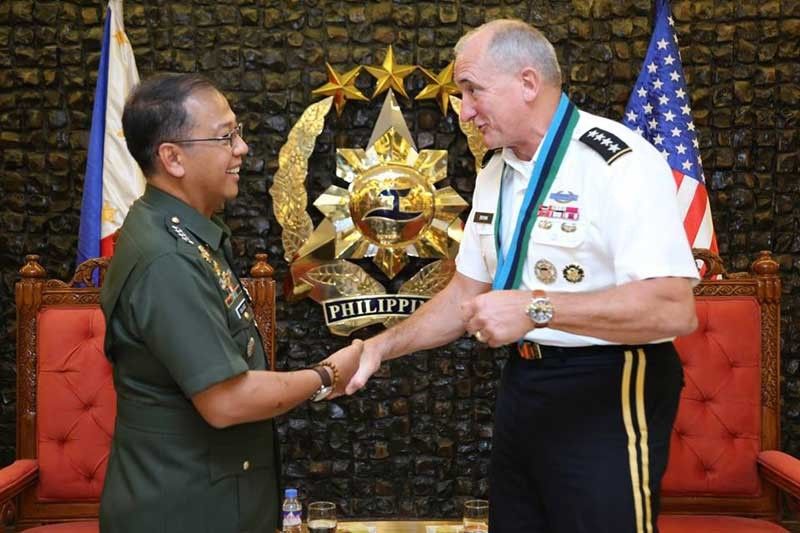US eyes more troops in Pacific

WASHINGTON – The US Army plans to deploy as many as 5,000 to 10,000 troops in the Pacific as part of a “dynamic force employment” concept, which calls on the military to be more agile and less predictable.
The move will add the equivalent of a division headquarters and several brigades to ongoing rotations in the Pacific, Gen. Robert Brown, commander of Army forces in the Pacific, told the Stars and Stripes in an interview this week.
Brown said existing rotations and forces stationed in the region would remain in their assigned missions and that the new rotations would add to that force strength.
Gen. James McConville, vice chief of staff of the Army, also said in an interview that the force employment concept was unveiled last year as part of the US National Defense Strategy with the ultimate goal of restoring readiness so forces can be ready for a major conflict on short notice.
“We’re talking about moving troops into a place with certain capabilities based on the partners we’re dealing with – move them out and move them back,” he told the US military newspaper. “And then have the agility to move around the globe and in this theater the way we need to in response to our partners.”
Neither Brown nor McConnville identified which units would be the first brigades to deploy as part of the additional force. They also did not indicate when that would begin.
Brown said US troops on rotation in some countries will stay for longer stretches, such as this summer when soldiers will spend four months in the Philippines doing training. That will extend to a six-month rotation next year, he added.
Meanwhile, a US official said neither his country nor the Philippines has made any request for a renegotiation of the 1951 Mutual Defense Treaty.
“There is no request from either side to renegotiate the treaty. That said, we have frequent discussions and talks in appropriate channels with appropriate mechanisms on a regular basis about the treaty,” Patrick Murphy, US Principal Deputy Assistant Secretary (PDAS) for East Asian and Pacific Affairs, said during a teleconference last Friday with reporters in Manila.
“Our view of the MDT is that the South China Sea, for the purposes of the treaty, is part of the Pacific. And therefore, any attack on US or Philippine assets, personnel, in that region would trigger the responsibilities and opportunities that the MDT provides,” Murphy, speaking from Hawaii, said.
Defense Secretary Delfin Lorenzana has been pushing for a review of the decades-old treaty to give it more clarity and make it attuned to the present times.
“There are many voices in the Philippines these days who are making observations about the treaty, but I share with you the official view that there’s no request to renegotiate and there’s appreciation for the clarifications that have been shared,” Murphy said. – Jaime Laude
- Latest
- Trending































